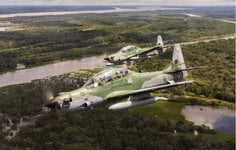GregP
Major
Thought this might be interesting. It shows the time from the production of the 1st to 500th aircraft and from the 500th to the 1,000th aircraft for 10 major U.S. airplanes.

It comes from "Problems of Accelerating Aircraft Production During World War II," and shows clearly that when the U.S.A. wasn't actually in the war, things proceeded slowly. When war overtook us, things picked up. From B-17 #1 to B-17 #500 took from mid-1937 to about Apr 42, but from #501 to # 1,000 only took until about Sep 42. Talk about accelerated production! Priority changes things indeed. The shortest was the F6F, with the first 1,000 airplanes all within less than a year.
No real statement, just an interesting look at accelerating production.
It comes from "Problems of Accelerating Aircraft Production During World War II," and shows clearly that when the U.S.A. wasn't actually in the war, things proceeded slowly. When war overtook us, things picked up. From B-17 #1 to B-17 #500 took from mid-1937 to about Apr 42, but from #501 to # 1,000 only took until about Sep 42. Talk about accelerated production! Priority changes things indeed. The shortest was the F6F, with the first 1,000 airplanes all within less than a year.
No real statement, just an interesting look at accelerating production.


